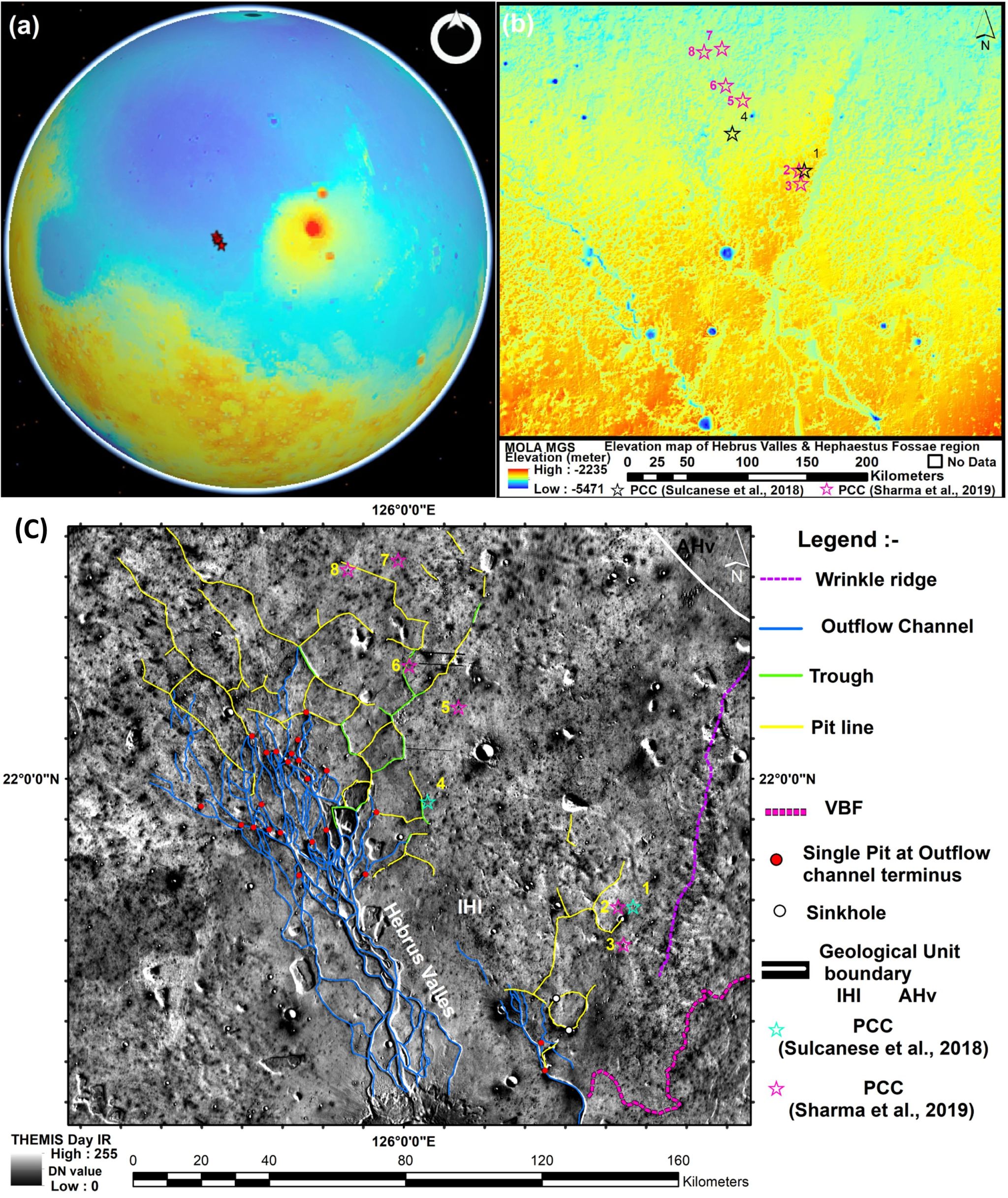October 30, 2025 — A research team led by Researcher Chunyu Ding at Shenzhen University has published a paper in the Nature Index journal The Astrophysical Journal Letters titled “Water-driven Accessible Potential Karstic Caves in Hebrus Valles, Mars: Implications for Subsurface Habitability.” The study reports the first identification of karstic cave structures in the Hebrus Valles region of Mars that were likely formed by water-solution processes, offering key clues to subsurface environments relevant to potential life and future human habitation. The Institute for Advanced Study (IAS), Shenzhen University is the primary completing institution. Researcher Chunyu Ding is the corresponding author, and postdoctoral researcher Ravi Sharma is the first author. Collaborators include Li Qingquan (Shenzhen University), Yachen Xie (Sichuan University), Yan Su (National Astronomical Observatories, Chinese Academy of Sciences), Francesco Soldovieri (CNR-IREA), as well as YuXiao Zhi, Jiangwan Xu, Zhonghan Lei, Haoyu Chen, Zihang Liang, Xiaohang Qiu, Changzhi Jiang, and Tang Chuanhu from IAS.
Whether Mars hosts water-formed caves analogous to terrestrial karst has long been a key question in planetary science. By integrating multiple orbital datasets—including high-resolution imagery, digital terrain models, mineral distribution maps, and hydrogen-content information—the team systematically analyzed the geomorphic and geologic characteristics of the Hebrus Valles region (Fig. 1). The results show regularly aligned pit chains and bowl-shaped skylights whose morphologies closely match terrestrial karst collapse openings. Nearby strata are enriched in soluble minerals such as carbonates and sulfates, and subsurface hydrogen abundances reach up to 3.73%, indicating past activity of liquid water or glacial meltwater.
The study further proposes a formation model for Martian karst caves: groundwater or glacial meltwater percolated into soluble rock layers, gradually dissolving the substrate to form subsurface voids that eventually led to surface collapse and skylight formation. Such caves likely maintain buffered internal environments with muted temperature fluctuations and may preserve accessible water resources—promising potential habitats for life and ideal candidates for future exploration and human habitation on Mars. This work provides the first comprehensive characterization of water-driven karst features and subsurface habitability potential in Hebrus Valles, laying a scientific foundation for subsequent in-situ cave exploration using ground-penetrating radar or robotic platforms.
This research was supported by the China Postdoctoral Science Foundation, the Shenzhen University 2035 Program for Excellent Research, the National Natural Science Foundation of China, the Guangdong Provincial Natural Science Foundation, the Shenzhen Science and Technology Innovation Commission, and the International Space Science Institute (ISSI).
Paper link: https://iopscience.iop.org/article/10.3847/2041-8213/ae0f1c/pdf

Figure 1. Regional context and spatial distribution of candidate karstic skylight features in the Hebrus Valles area of Mars.


